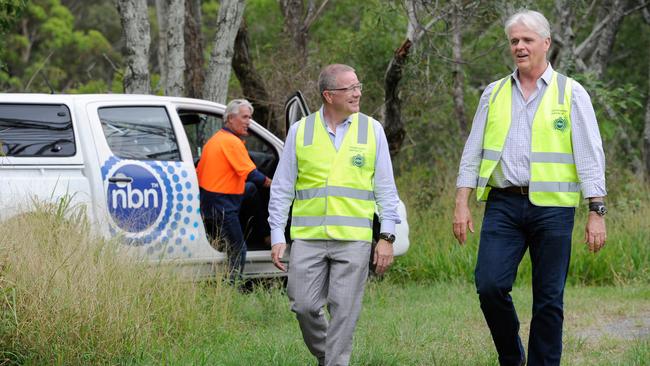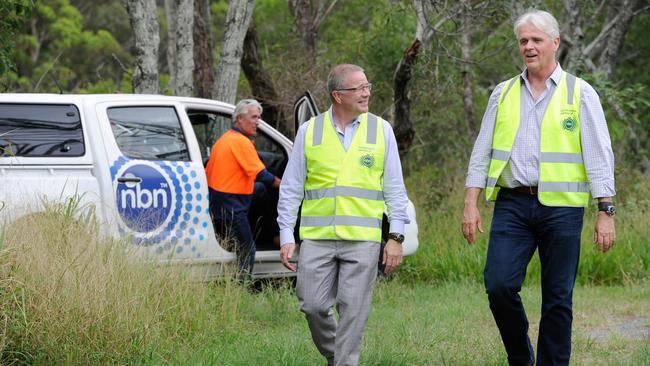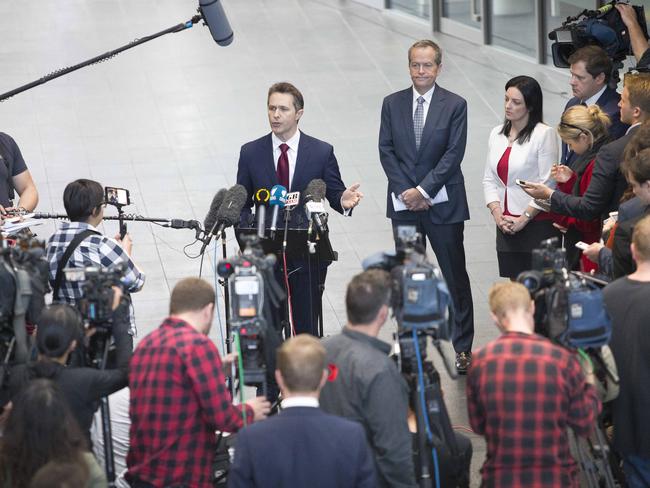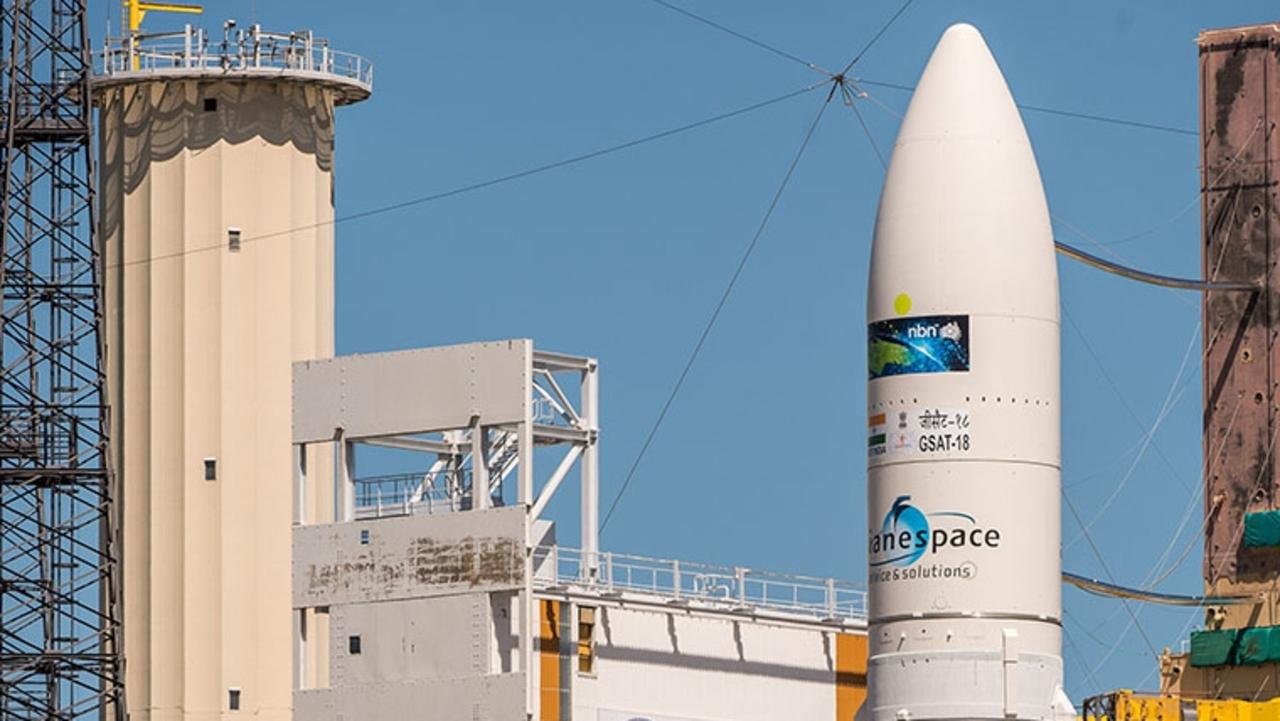How the major parties differ on the NBN this election
BOTH sides of politics are making some nice promises about the NBN. But are they true? This is how the result will affect your internet.

THIS weekend voters will be given a genuine choice when it comes to the country’s internet.
They can stay the course with Malcolm Turnbull’s rollout which uses a raft of different technologies in a bid to save on costs but has been criticised for providing inferior results and being shortsighted.
Alternatively, if Labor wins government they have promised to revert back to the party’s original model of relying on running fibre optic cable to homes and business across Australia.
Labor’s plan allows for much greater speeds and bandwidth but is more labour intensive and, particularly at the outset of the project, more expensive.
Mr Shorten’s party is promising a superior fibre connection for an (estimated) two million extra Australian premises at the same price as the Coalition’s network.
But it’s a little more complicated than that.
Here’s what you need to know about the different NBN policies promised by Labor and the Liberals this election and what it means for your internet connection.
HOW WE GOT TO THIS POINT
Labor first ushered in the project in 2009 with an extremely bold vision.
The party pledged to deploy fibre-to-the-premises (FTTP) to 93 per cent of Australia’s homes and businesses in what it hoped would provide the technological backbone for the country’s future prosperity.
The FTTP technology currently provides download speeds of more than 100 megabits per second but can go as high as 1Gbps. Australia’s current average peak download speed is 43Mbps which puts us 56th in the world, according to the Akamai State of the internet report released this week.
When Kevin Rudd first mentioned the NBN he did so with a $15 billion price tag. Unsurprisingly for a project of this magnitude, the costs blew out and that price tag soon ballooned to $43 billion.
As Communication Minister when the Coalition won the 2013 election, Malcolm Turnbull came to power promising to complete the rollout sooner than Labor, and for $15 billion less.
The new government ordered the National Broadband Netowrk to abandon the FTTP rollout for a cheaper “multi technology mix” that predominantly relied on the pre-existing copper and Hybrid Fibre Coaxial (pay TV) networks owned by Telstra and Optus to make the final connection to the home.
It’s a decision that the original CEO of NBN Co. Mike Quigley recently referred to as a “colossal mistake”.
The copper network proved to be in a far worse state than predicted and the need to upgrade it led to further delays and cost blowouts.
The fibre to the node (FTTN) model which connects fibre to the existing copper network at boxes positioned on street corners has become the bedrock of the Coalition’s policy. It has also been criticised by detractors who believe the speeds it offers — between 25Mbps and a maximum of 100Mbps — will render the network obsolete in the future.
The current total cost projection for the project for both parties is $57 billion and the Coalition is hoping for a 2020 completion date, a little bit sooner than an expected 2021 completion date for Labor.
It’s important to note that not all the $57 billion cost comes from the taxpayer’s hip pocket. Public spending is capped at about $30 billion. So the taxpayer is not directly on the hook for the whole amount; the NBN will borrow from the private sector to pay for the rest — at least that’s the plan.

WILL I GET BETTER INTERNET IF LABOR WINS GOVERNMENT?
There’s no magic wand to change what’s already been done and Labor has said it will not touch existing contracts put in place to build the NBN.
It won’t touch existing satellites or fixed wireless technology, which account for about seven per cent of the rollout, and will honour contracts using the hybrid fibre coaxial network (HFC) network.
That means Labor will only carry out its FTTP plan to an extra two million premises.
If Labor wins and all goes according to plan, that would see 39 per cent of the country connected via the superior technology compared to 20 per cent under a Coalition government.
The HFC network primarily exists in Sydney, Melbourne and Brisbane and thus a majority of those who will benefit under Labor’s NBN will come from outside the major cities.
“Many of these (two million) premises are in outer suburban parts of Australia, but also in regional Australia as well,” Opposition communications spokesman Jason Clare told reporters at Labor’s policy announcement.
The main benefactors of Labor’s policy “are regional Australia and outer suburban suburbs,” he said.
Basically, if you live in a suburban area that is not connected to the NBN and has no existing contract to begin building, then a Labor win could likely mean better internet for you.
However for those already connected, do not despair.
Labor plans to commission Infrastructure Australia with the task of finding a way to upgrade the current FTTN installations to FTTP after the rollout is complete. However there is no indication where that money would come from.
There is, of course, a caveat to Labor’s promise.
Labor has capped the spending at $57 billion and thus there is an asterisk on the extra 19 per cent as the price cap will dictate how many homes get the more expensive FTTP instalments.
If costs are higher than expected, fewer homes will get fibre to the home.

THE NBN HAS PROVED A CAMPAIGN WINNER FOR LABOR
The Coalition’s “mongrel network” has been highly criticised by industry leaders.
For instance, an NBN insider told news.com.au this week: “There’s more chance of finding rocking horse (poo) in the corridors of the NBN than finding an engineer who supports a multi-technology mix over copper.”
For the most part, the Coalition has avoided the issue of the NBN on the campaign trail as it has turned out to be a big winner for Labor.
Labor’s supremacy on the issue was made particularly evident during the Facebook leaders debate hosted by news.com.au in which Mr Shorten urged viewers to press the “like” button if they wanted fibre to the home.
When the screen began filling with the “like” icon all Mr Turnbull could do was cop it with a long face.
Speaking to news.com.au last week, a public servant and lifelong Liberal voter said the issue of the NBN meant he would vote Labor for the first time in his life.
He lives on the outskirts of Canberra off the Barton Highway and is currently connected to the NBN via satellite which he said means his capabilities are “limited”.
Even though a Labor win won’t change his circumstances, he has been highly disappointed by the Coalition’s approach to the NBN.
“From my point of view, Labor seem to have an understanding of the importance of this network and even though it really goads me to do it, to vote that way, to me that’s what’s important,” he said.
“The Coalition talk about it being used for things like Netflix … they don’t seem to see it as real infrastructure that’s really needed for our country to move forward, particularly for rural areas.”
It’s a sentiment that was reflected in a recent ABC survey which showed 69 per cent of Australian would prefer the Labor version of the NBN even if it cost the taxpayer more.
It remains to be seen if the difference in policy will be enough to draw votes away from the Coalition but the main thing to remember is that Labor is promising a superior internet connection for an estimated extra 19 per cent of the country.
For the rest of us, it will be the same old mixed technology solution.




